Home > About Us > UNHCR People > Prominent Refugees
Prominent Refugees
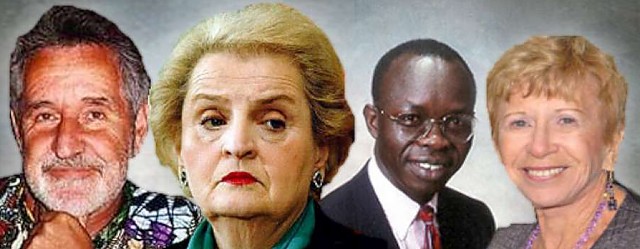
Refugees Who Have Made a Difference
Refugees or former refugees who have achieved special status within a community due to their achievements, or because they have overcome hardship to build a new life.
This gallery features profiles of some 200 refugees who have made a difference and left a mark in the world. The list includes people, dead and living, in all walks of life. Some, like writer Chinua Achebe, composer Bela Bartok, physicist Albert Einstein and actress-singer Marlene Dietrich are world famous, others have shared their gifts locally. The UN refugee agency salutes all of them for showing the potential of refugees around the world.

Photojournalist Robert Capa was an exile twice over who became known as one of the greatest war photographers of the 20th century and founder of the world-famous photo agency, Magnum.
Born Endre Erno Friedmann, he fled from his native Hungary at the age of 17, after being branded as a subversive for demonstrating against the fascist regime of Admiral Mikolos Horthy. He moved to Berlin with the intention of studying journalism. To support himself, he began working as a darkroom assistant for a well-known photojournalist. For his first shoot, he was sent to Denmark to cover a talk by Leon Trotsky. Two years later he fled Germany as Hitler came to power. The family and friends Capa left behind in Hungary died in Nazi concentration camps.
In Paris, where he settled, Capa met and fell in love with German-born photojournalist Greta Pohorylle, also a Jewish refugee. It was she who persuaded him to change his name to Capa, while she took the name Greta Taro. The two became famous for their coverage of the Spanish Civil War from the Loyalist side.
By the age of 25, Capa was already hailed as the world's greatest war photographer. His photographs portrayed the full spectrum of the emotions of war - from the elation of Franco's troops entering Madrid in 1936, to long columns of defeated forces walking into exile in France, and the dejection of Spaniards behind chain-link fences in refugee camps in 1939.
In July 1937, his wife was killed in a car accident. Some say Capa never got over it, soothing his pain by gambling and drinking, mixing with celebrities and living dangerously. One of his mottoes was: "If your pictures aren't good enough, you're not close enough".
Yet his brother Cornell noted: "Bob was actually a peace photographer. His kind of photography was not war, but the ordinary people it involves."
Capa recorded people's attempts to retain a sense of normality during war, often focusing on what happened off the battlefield. His new perspective was aided by the introduction of the lightweight Leica camera.
He went on to cover World War II, capturing on film the allied victories in North Africa, Sicily and Normandy. Parachuting with the Americans into Germany, he chronicled the fall of Leipzig, Nuremberg and Berlin. At the end of the war, he joked about having business cards printed that read: Robert Capa, War Photographer, Unemployed.
In fact, his career entered a new phase. In 1945 he met Swedish film star Ingrid Bergman and started a two-year relationship that brought him into Hollywood circles. During this time he made famous portraits of Gary Cooper and Gene Kelly, and made friends such as Ernest Hemingway, Pablo Picasso, John Huston and Truman Capote.
In 1947 Capa co-founded the Magnum photo agency, together with Henri Cartier-Bresson, David Seymour and others. But he did not stop covering conflicts. He died in 1954 after stepping on a land mine while reporting on the French Indochina war.
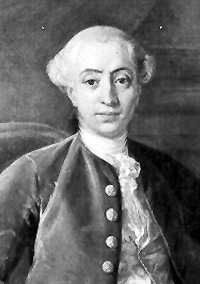
Casanova, remembered today as a scoundrel and the world's greatest lover, spent the last 13 years of his life in exile in a castle in Duchcov, Bohemia, where he served as a librarian for his Freemason friend Count Waldstein. It is here that Casanova wrote "L'Histoire de ma Vie" (History of My Life), a 12-volume account of his life without which one might never have heard of him.
Casanova's mother was widowed at the age of 25 and managed to support her children by performing as an actress throughout Europe. But she practically abandoned the young Casanova, who was placed in the care of his grandmother. He trained to become a priest, but was expelled from the seminary in 1741 for scandalous conduct.
Casanova travelled across Europe, taking on numerous careers including violinist, professional gambler, journalist, translator of the Iliad, soldier for the Venetian army, alchemist, businessman and spy. Although he came from a poor family, he spent his life at court. He was at one time director of the state lotteries in Paris and an agent of Louis XV. He entertained Goethe, Voltaire, Schiller and the young Beethoven. While Mozart was composing his opera "Don Giovanni" in Prague, Casanova assisted his librettist, Lorenzo da Ponte, by scribbling a few lines for the libretto inspired by his own amorous experiences.
To the wealthy and bored, Casanova could discourse on a wide range of subjects. He drew up a blueprint for a soap factory and devised a grammatical lottery for the city of Prague that aimed to teach the player French. He anticipated science fiction with his utopian adventure tale "Icosameron" (1788), and wrote treatises on the Enlightenment, atheism, and the education of young women.
Casanova wrote of how, on his arrival in Vienna in 1747, Empress Maria Theresa set up a Chastity Commission to curb sexual licentiousness. However, recent biographies testify that Casanova was actually in some ways an early feminist - an admirer of women's intelligence and an enthusiastic accomplice in the pursuit of their sexual pleasure.
Casanova got involved in one intrigue after another, including duels, imprisonment, daring escapes and near beheading. He wrote a book about his escape from imprisonment in the Doge's Palace in Venice in 1756, where he was serving a sentence for immorality and blasphemy.
He returned to his hometown and served as a police spy for the Venetians, but was exiled in 1782 for libel. At the age of 57 he began writing his witty autobiography.
Yet the book was censored for centuries and only in 1960 did the original French version come to light. A recent book published by French philosopher and writer Philippe Sollers, "Casanova L'Admirable", argues that far from being a libertine, Casanova was a "philosopher in action". In Sollers' view, "people did not want to see Casanova as a writer, so they turned him into a beast".
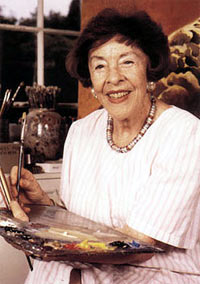
Artist Judy Cassab has drawn inspiration from the whole world, painting museum pieces in Austria, fashion models in Britain and landscapes in her adopted home country, Australia.
She arrived in Vienna in 1949, fleeing 10 years of oppression at the hands of both the fascist and communist regimes in Hungary. Her family had perished in the Holocaust, but she made the best of her time in Austria. "I copied a (painting by) Brueghel in the Kunsthistorische Museum in Vienna and studied all the galleries," she recalls. But Austria was not far enough removed from the painful memories of the past and so, with the help of a small globe, the family began to search for a country that could become their new home.
After almost two years of waiting, Cassab received news in late 1950 that the Australian Government had granted her and her family permission to resettle in Australia as "displaced persons".
"We arrived by boat in 1951 with two children - six and four - no English and very little money," she says. The family lived in one room and Cassab had to share a gas stove with eight other Hungarian refugee women. Yet it was in these unpromising surroundings that her passion for art, and for painting in particular, blossomed. Working initially as an art teacher, her dedication was reflected in the fact that she spent her entire wages on a housekeeper so as to allow her more time to develop her own painting.
It was not long before her work came to the notice of Sydney's small but influential artistic community. Soon, Cassab's talent as a portrait artist was receiving a significant degree of attention. In 1955 and 1956, her portraits of models Judy Barraclough and Elaine Haxton were awarded a 500-guinea Women's Weekly prize.
Using the prize-money to fund her trip, the artist returned to Europe on a study tour. In London, on the final leg of her journey, a letter from Barraclough provided a reference that allowed Cassab to secure a commission to paint another famous model. This work, seen by Peter Thorneycroft, then Chancellor of the Exchequer, led to another commission, and another, and soon Cassab's talents were so sought-after that she had to make a return trip to London the following year to complete all her commitments.
The artist's work has grown to include portraits of celebrities and royalty from around the world. Her style has expanded to encompass still life and landscape works, primarily motivated by the richness of the colours and textures of central Australia. Cassab has twice won Australia's Archibald Prize (1961 and 1968), been awarded the Order of Australia and made Companion to the Order of the British Empire in recognition of her contribution to the arts.
Now over 80 years of age, she continues to paint each day. Her works are represented in the National Gallery of Australia, and in public and private collections throughout Australia and the world.
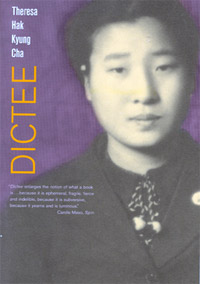
Theresa Hak Kyung Cha, the child of refugees, made exile and displacement the artistic motifs of her short life. In her only published book, "Dictée", she conveys the sense of loss and alienation in an avant-garde work composed of fragments of language.
On November 5, 1982, the same year she got married and published "Dictée", the 31-year-old writer was murdered in New York City. Since her death, there has been a revival of critical interest in her work. Although her use of "difficult" techniques and her mixed media orientation initially alienated the Asian-American literary establishment, critics slowly came to appreciate her work.
After the annexation of Korea by Japan in 1910, large numbers of Koreans fled to Manchuria to escape the brutal suppression of Korean culture and freedom. It was in this turbulent atmosphere that Cha's parents grew up. They returned to Korea, but the Korean language remained banned and she was born amid the chaos of war. Her parent's memories of exile in Manchuria and their cultural exile in their occupied homeland became her inheritance. Then in 1962, the Cha family left for America.
Cha's early education in Hawaii and then San Francisco consisted of French language instruction mixed with Greek and Roman classics and traditional Korean dance. She graduated from the University of California, Berkeley, in 1973, then launched a career as an experimental artist working in mixed media, video, poetry, performance art and installation. Her interests ranged from Korean poetry to the European modernists, French feminist writers and film theory - all interwoven to form a hybrid personality with multiple points of cultural reference.
Cha went on to study at the Centre d'Etudes Américaines du Cinéma in Paris. She became a naturalised US citizen and moved to New York. She became well-known on both coasts for her installations and video art (including Exilee and Passages, Paysages), and as the editor of "Apparatus/ Cinematographic Apparatus: Selected Writings".
But she was best known for her only published book "Dictée", a truly experimental product. The book is a curious mélange of styles and genres, images and texts, references and histories, languages and type fonts. Although many see it as a feminist, postcolonial, or a classic "ethnic studies" text, "Dictée" is almost unclassifiable. Divided into nine chapters whose chapter headings are named after the nine Greek muses, the book is rife with historical and literary allusions, biographical and autobiographical elements, and demands to be read on many levels. It traces a maternal genealogy that includes, among others, Cha's mother, Joan of Arc and St. Theresa.
Following her death, images and texts from "Dictée" were exhibited at Artists Space in New York and her video/ film work was featured in the First Annual International Asian Video Festival and the Anthology Film Archive. A retrospective and symposium on Cha's work was held at Berkeley in 1990 and the University Art Museum and Pacific Film Archive established the Theresa Hak Kyung Cha archive in 1991. In 1993, the Whitney Museum of American Art honoured her with a retrospective exhibition.

Passionate, tragic, melancholic and patriotic, the great 19th-century composer Frédéric Chopin dreamed of freedom for Poland.
While fellow Romantic Byron died fighting for Greek independence, Chopin, in exile, wrote music rooted in the Polish spirit. As one of his pupils played his Etude in E Major, he is said to have exclaimed, "Oh! Ma patrie!" in memory of his homeland.
The son of a French émigré and a Polish noblewoman, Chopin had a happy childhood, doted upon by three sisters. He studied music in Warsaw, then made plans to go to Vienna. As early as 1830, the critics noted his use of folk melodies. "Chopin knows what sounds are heard in our fields and woods, he has listened to the song of the Polish village, has made it his own and has united the tunes of his native land in skilful composition and elegant execution," wrote one critic.
As a student, he and his friends planned an insurrection against the Russians. Chopin's role was to publicise the cause of Poland abroad, through his music. His father, another ardent Polish patriot, agreed. Chopin left Warsaw for Vienna, and some months later, when fighting broke out, he was advised not to return.
In September 1831, he arrived in Paris. He was soon discovered and welcomed into the drawing rooms of high society and the exiled Polish nobility. Here he found both an appreciation of his genius and a way to financial independence - with eager, aristocratic pupils.
The mazurkas, polonaises and nocturnes, which immortalised the folk music and sounds of Poland, awakened French consciousness to the Polish struggle. But alone in exile, Chopin became introverted and melancholic. He found some solace in his relationship with French female novelist George Sand. But he fell out with her in 1847 and developed tuberculosis.
Nonetheless he made a final concert tour to Britain, where he played for Queen Victoria and met writer Charles Dickens.
Chopin died on October 17, 1849, with Sand's daughter at his bedside. His body lies in the Père Lachaise cemetery in Paris, marked with the sculpture of a weeping muse with a broken lyre. But his sister, Ludwika, took his heart back to Poland with her, and it was laid to rest in the Church of the Holy Cross in Warsaw.

Born in Hong Kong in 1939, Adrienne Clarkson came to Canada as a toddler when her family fled from the Japanese invasion of 1941. She went on to make a glittering career for herself in broadcasting before becoming the country's Governor General.
Clarkson received her early education in the Ottawa public school system and went on to Trinity College and the University of Toronto on a scholarship. She became Head of College and after completing an MA in English, travelled to France and continued post-graduate studies at the Sorbonne.
A leading figure in Canada's cultural life, Clarkson has had a rich and distinguished career in broadcasting, journalism, the arts and public service. From 1982 to 1987, she served as the first Agent-General for Ontario in Paris, promoting Ontario's business and cultural activities abroad. From 1988 she assumed responsibilities as executive producer, host and writer for the Adrienne Clarkson's Summer Festival and the Adrienne Clarkson Presents programmes. She has also written and directed several films.
Before being appointed Canada's new Governor General in September 1999, she served as Chairman of the Board of Trustees of the Canadian Museum of Civilization in Hull, Quebec, as well as President of the Executive Board of IMZ (the International Music Centre based in Vienna). She holds honorary doctorates from four Canadian universities and has received three honorary academic awards.
She has also been involved in human rights activities. In 1988 she was part of a delegation of non-governmental observers for a plebiscite in Chile; in June of the same year she investigated the human rights status of writers, directors and actors for the International Pen club, of which she is a member.
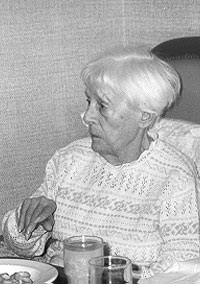
During the 1930s many Spanish women found their voice in the struggle against Fascism. Rosa Cubeles was one of these women who risked life and limb for the Republican cause. Alongside her husband Salustiano, she saw the conflict as a fight between fascist militarism and freedom.
Both came from privileged families from the Tarragona region that stood to lose much power and property under the new reforms proposed by the Republican government. Cubeles' family began to refer to her as "a little Bolshevik" and considered her "defection" unforgivable.
When the Republic fell in 1939, she and her husband fled to France, where they were separated for 18 months in different refugee camps. During this time Cubeles was led to believe her husband was dead, but once they were finally reunited, they joined the resistance together.
During World War II, the couple was supported by a wealthy French family that took them into their home. Cubeles worked as a maid in their house and gave lessons to their children. After years of living and working for the family, Salustiano decided to make his own way as a tailor and Cubeles assisted him in a small tailoring business and raised their own family.
The couple accepted their dramatically diminished circumstances with resignation and bore their isolation in exile with grace. They were never reconciled with their families. In 1985, Cubeles asked the Spanish Refugee Aid for financial assistance, as she was growing ill and had only a small pension to live on. When Salustiano died on July 1, 1993, she moved to a retirement home for the elderly.
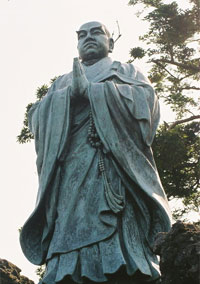
Mediaeval Japanese monk Nichiren Daishonin attempted to reform Buddhist teachings at a turbulent time in Japanese history and paid the price by being persecuted and exiled.
The son of poor fisher folk, Daishonin left home at the age of 12 to study at a nearby temple. As he learned about Buddhism, he became concerned about the bewildering number of Buddhist sects and the doctrinal contradictions within the Buddhist canon. Because of the vast number of different teachings of the Shakyamuni Buddha, there was widespread confusion over what the correct Buddhist practice should be.
Daishonin concluded that the true teachings of Buddhism were to be found in the "Lotus Sutras", the last teaching propounded by Shakyamuni, and in 1253, he established a practice of Buddhism based on the chant of Nam-myoho-renge-kyo. But in his efforts to preach his doctrine, he challenged the religious and secular powers of the day. Religious leaders colluded with the political authorities and they took steps to have Daishonin arrested.
This marked the start of a wave of persecution. Priests from other Buddhist sects conspired with the government to get rid of Daishonin. He was exiled to the Izu Peninsula in 1261 and then to Sado Island in 1271. In mediaeval Japan, exile usually amounted to a death penalty.
On September 12, 1271, the government tried to have Daishonin executed. But a luminous object reportedly appeared in the sky and terrified all present. The executioner fell on his face, blinded. Officials were so impressed that they called off the execution.
During the Sado exile, Daishonin devoted himself mainly to preaching and writing. Many of his most important works date from this period. He taught that all living beings, regardless of gender or intellectual capacity, can attain the enlightened state of life within their given lifetime. Some years after, the regent of the Shogunate government revoked the edict of banishment.
On October 13, 1282, Daishonin died, leaving a timeless philosophical framework, both practical and spiritual, based on the Buddhist concept of personal growth, compassion and altruism. It is shared today by millions of followers of the Soka Gakkai International movement, or the Buddhist Society for the Creation of Value.
Director Jules Dassin won an American Academy Award nomination for "Never on Sunday" a few years after he was forced to leave Hollywood amid accusations of being a Communist sympathiser.
Dassin was born in Connecticut, the son of a barber. He attended high school in the Bronx, New York, went on to study drama and graduated in 1936.
He took various film-related jobs, including assistant film director to Alfred Hitchcock. He worked as a screenwriter and director of stage productions and was a writer for the Kate Smith Radio Show.
Dassin moved to Metro-Goldwyn-Mayer (MGM), where he directed an adaptation of Edgar Allan Poe's story, "The Tell-Tale Heart". The short movie earned substantial acclaim and several prizes. In 1946 Dassin won a lucrative Hollywood contract working alongside director Mark Hellinger. He went on to direct successful films such as "Brute Force" and "Night and the City", which premiered in 1950.
Trouble started for him when he was preparing "Two's Company". He suddenly found himself caught up in the wave of McCarthyism. Denounced as a communist by two witnesses, he was ordered to appear before the House of Un-American Activities Committee.
Dassin's Hollywood career collapsed as he was blacklisted by the Hollywood film industry. He moved to Europe, but even there he faced initial difficulties, as the films he made in Europe would not be accepted by the American market because of the blacklisting.
He continued to propose various film projects, however, and in 1954, a French producer agreed to finance "Rififi", a low-budget thriller about jewel thieves. This film, which Dassin co-scripted and acted in under the name of Perlo Vita, proved surprisingly successful, earning accolades from critics in Europe and across the Atlantic. He received the Best Director award at the 1955 Cannes Film Festival.
Dassin's biggest success was "Never on Sunday", a 1960 film set in Greece. It was about a happy-go-lucky prostitute played by the woman he later married, Melina Mercouri. Dassin himself played the lead character - a naive American tourist who tries to reform her. The film met immense success on both sides of the Atlantic, and ultimately earned Dassin an Academy Award nomination for Best Director.
Mercouri went on to become a household name and a political superstar in her own right, serving, among other things, as Greek Minister of Culture.
Argentinian lawyer Leoandro Despouy defended political refugees from across Latin America. Forced to flee his home country, he started a career in France as a human rights activist, political advisor and photographer's model.
Back in Argentina, he had offered help to Uruguayans, Bolivians, Brazilians and Chileans. Soon he began receiving death threats, first from neighbouring countries and then from inside Argentina. A bomb was planted at his office, and his working partner Silvio Frondisi was kidnapped and killed. At this point Despouy decided to go into hiding. He spent four months underground, moving every few days.
He took a boat up the Rio Parana and entered Paraguay, and from there boarded a flight to Spain. But the plane had a technical problem, and was forced to stop in Brazil, where two secret service agents spotted him. Upon his arrival in Spain, he realised he was still being followed. So after two months in Madrid, he left for Paris.
Despouy began working for France Terre d'Asile. In France he met other exiles, many of whom he had defended back in Argentina. "It was a world that actually belonged to me," he recalls. He campaigned for the international recognition of human rights abuses in Argentina and on behalf of the tortured and the missing. He fought for the release of his girlfriend from a prison in Paraguay, and for seven years, avoided contacting his family for fear that they may, in turn, be harassed.
Together with other Latin American refugees, Despouy founded an agency to promote solidarity in the exile community. He began to meet members of the Parisian arts scene, and through them, got to know some fashion designers. Soon, the dashing young lawyer found himself earning his living as a fashion model.
"I sold my soul to the devil," Despouy recalls, laughing. "I felt an infinite guilt about having this job which brought me to places of extreme luxury, while my friends were in Paris accepting all sorts of odd jobs to survive."
Yet the money he made went to the exile community. Once he learnt to speak French, Despouy began working for the French Parliament as an assistant for the Socialists. He became an expert in French politics, and was often present at parliamentary hearings. "I came back to Argentina as soon as I could, but I left France a bit more of a Frenchman," he says.
Despouy returned to Argentina at the beginning of 1984, following democratic elections in the country. He is currently an ambassador for Argentina working as Special Representative for International Human Rights for the United Nations.